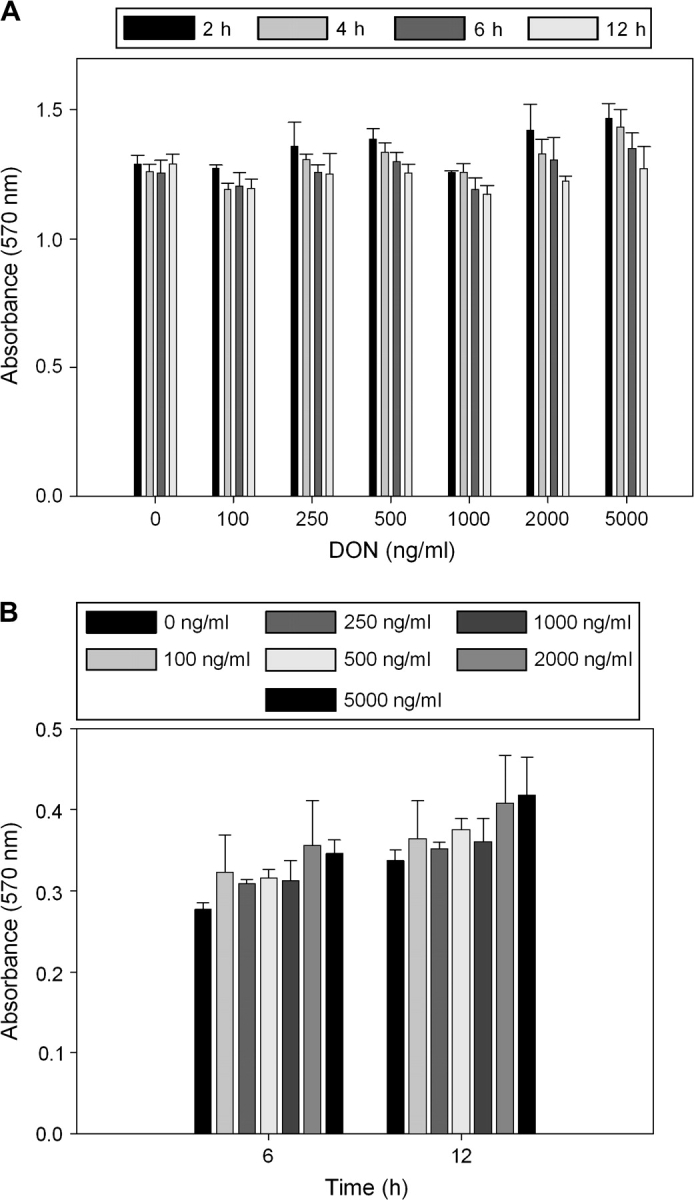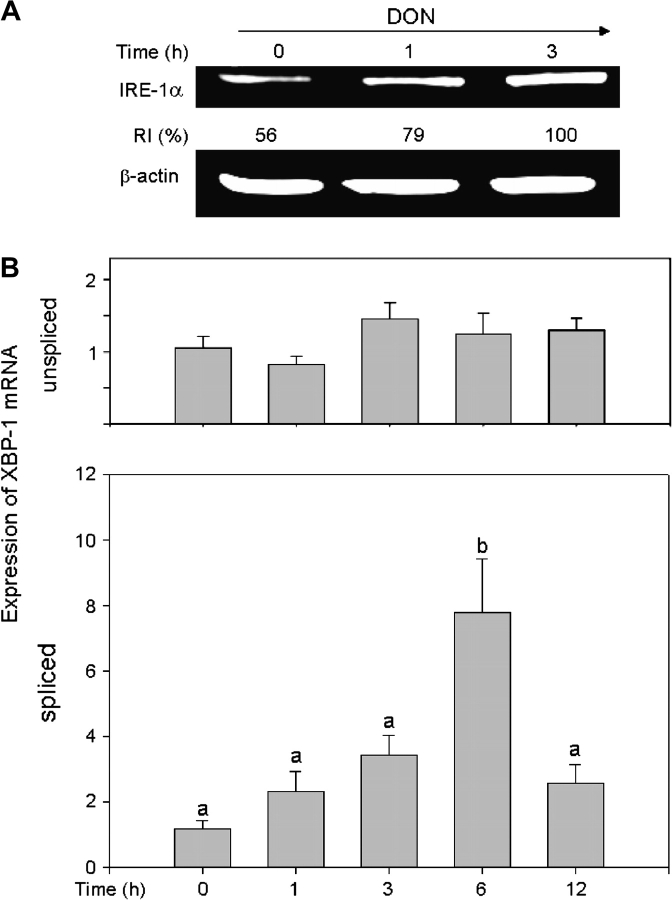Role of GRP78/BiP Degradation and ER Stress in Deoxynivalenol-Induced Interleukin-6 Upregulation in the Macrophage
Yuhui Shi, Katie Porter, Narayanan Parameswaran, Hee Kyong Bae, and James J. Pestka
doi:10.1093/toxsci/kfp060
Toxicological Sciences 109, 247–255, 2009
Figures 1, 6 and 7 were incorrect in this article. The correct figures are:
FIG. 1.

DON is not cytotoxic to peritoneal macrophages. DON cytotoxicity was assessed in cultured peritoneal macrophages by the (A) MTT and (B) Alamar Blue assays.
FIG. 6.
DON upregulates IRE1α, and induces XBP1 mRNA splicing in peritoneal macrophages. Peritoneal macrophages were cultured with DON (500 ng/ml) for various time intervals. (A) Total protein was extracted and assessed for IRE1α . RI indicates relative intensity which is the percentage of the maximal fluorescence in the same lane. (B) Total RNA was extracted and relative concentration of unspliced and spliced XBP1 mRNA determined by real-time PCR. Data are means ± SE (n = 3). Bars with different letters differ (p < 0.05).
FIG. 7.
DON induces XBP1 and ATF6 in peritoneal macrophages. Peritoneal macrophages were cultured with DON (500 ng/ml) for various time intervals. XBP1 and ATF6 were analyzed by Western blot. RI indicates relative intensity which is the percentage of the maximal fluorescence in the same lane.
The author regrets this error.




